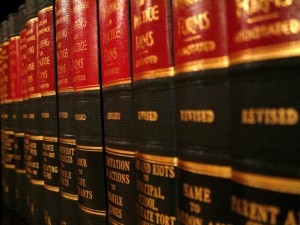Continuing our 3-part series on how the CSI Effect impacts trials.
Click here to read the INTRODUCTION from last week.
Let’s face it — video and audio played in court grabs the attention of a jury. And keeping a jury’s attention is an important task in court. If you uncover digital media evidence in your case, make sure you utilize it fully.
When looking back at the early history of television dramas, it’s safe to say that the CSI Effect has its influential roots in very early TV shows, such as Perry Mason and Sherlock Holmes. However, these shows represented a much simpler time in court and investigation proceedings, when conviction was usually based solely on witnesses testifying to what they saw, dramatically pointing out the murderer and saying “it was him!,” rather than using any type of scientific evidence.
Today, TV shows reflect a general trend of the increased use of technology and science in court.
As we’ve seen in case after case, eye witness testimony is not always reliable. The prosecution understands that today’s jurors want scientific data and evidence; not only because they have more exposure to science and technology tools than jurors of the past, but because they are exposed to television series, feature films, and high-profile court cases in the news that emphasize the importance of forensic, quantifiable evidence. Therefore, to be an effective prosecutor, it is absolutely necessary these days to openly address the existence of the CSI Effect and explain to the jury — both through void dire and in opening statements — that what they see on television and films is not what they will see in court.
Many claim that the present-day emphasis on the importance of scientific evidence can be traced back to the OJ Simpson trial, which is now regarded as somewhat of a game-changer in regards to the utilization of forensic science in the courtroom. The OJ trial was one of the most popularized and memorable events of the 1990’s, and the attention the case received from both the media and the general public was unprecedented. Specifically, the forensic analysis of the “bloody glove” that was found at the crime scene has become something of legend in the judicial world, and many claim that it was this single piece of evidence that completely altered the judicial systems’ view of forensic evidence.
Since the OJ trial, it now seems that jurors expect their criminal case to have that “bloody glove”-type of evidence that can be forensically investigated, and when there isn’t any to present, they demand to know why. Therefore, it is the prosecutor’s job to make it clear to the jurors, right from the very start, that no, not every case has scientific evidence. And in the event that there is scientific evidence, there are some things to clear up as well:
No, it is not as easy as taking a spec of blood or DNA or a fingerprint, putting it into a computer program and having a persons face pop up.
No, it is not as simple as viewing video surveillance of a car driving away, and forensically enhancing and “zooming in” to clearly show the license plate.
Trials and the presentation of evidence do not work like TV makes it appear, and it is difficult for prosecutors to make this clear to the jurors. It’s absolutely necessary to bring down the expectations of the jurors in order for a fair trial to take place.
Our next post — in about one week — will be exploring the perspective of the defense team and the best way for this side of a trial to handle the CSI Effect.
